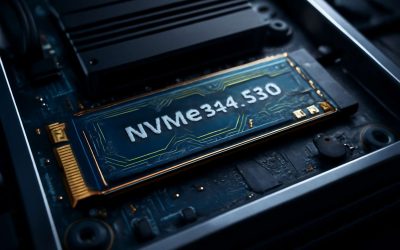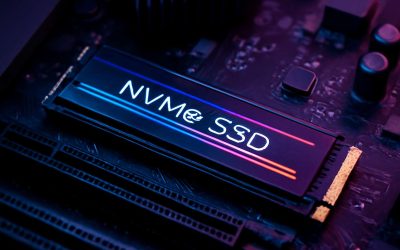
NVMe is a technology that improves the performance and speed of solid state drives. It is based on the PCIe bus and has the ability to reduce the latency of data transfers, which is especially beneficial for real time analytics. In addition, NVMe also reduces power consumption. This makes it a perfect fit for applications that require high performance computing environments.
NVMe can be used with any form of non-volatile memory. This includes memory mapped devices, flash based storage, and other types of persistent memory. Using NVMe, data access and transfer speeds are significantly faster than using the legacy SAS or SATA interfaces. Moreover, NVMe supports multiple cores and queues, which reduces power consumption and increases the overall performance of the system.
NVMe can be used in high-performance computing applications such as artificial intelligence, machine learning, and gaming. However, NVMe’s low latency advantage also allows it to support a wide range of enterprise applications. For example, big data analytics applications can take advantage of the increased data throughput and less power consumption.
The NVMe protocol is the standard for PCIe-based SSDs. There are three versions of the protocol. These include NVMe 1.2, NVMe 1.1, and NVMe over Fabrics Drive Specification. Each version defines a different set of features. NVMe 1.2 adds improved power management, live firmware updates, and end-to-end data protection.
NVMe provides a standardized software interface that allows operating systems to communicate with all types of SSDs. Moreover, it eliminates the need for device-specific drivers. Besides, the NVMe specification is future-proof. As new, more advanced solid state storage technologies are introduced, the NVMe protocol can be adapted to work with them.
NVMe’s high performance queuing mechanism and lower latency allows the protocol to be more scalable for the needs of SSDs than previous protocols. Moreover, NVMe’s higher transfer speeds can enable applications that need real-time processing of large databases. By leveraging these advantages, companies can accelerate existing applications as well as create new ones.
Despite its many benefits, NVMe can be costly. Nevertheless, the benefits of early adoption outweigh the initial cost. Plus, it is an ideal solution for data-intensive applications, like real-time analytics and big data.
There are several manufacturers offering NVMe solutions. Western Digital, for example, offers fully featured flash storage systems. Other vendors use the PCIe label for their SSDs. Also, some have announced that their products will support the NVME-oF specification, which was recently released. Although NVME-oF is still in development, most of its components are similar to the NVMe specification.
NVM Express is a nonprofit organization that is overseen by more than a hundred leading technology companies. Through its work group, the organization develops and promotes standards that improve the efficiency and productivity of data centers. Additionally, it has organized and conducted the first NVMe Plugfest to allow companies to test their compliance with the NVMe specification.
Today, NVMe is the best option for workload-intensive applications. Its reduced latency and faster search speed enable businesses to take advantage of new applications, such as artificial intelligence and machine learning.



0 Comments